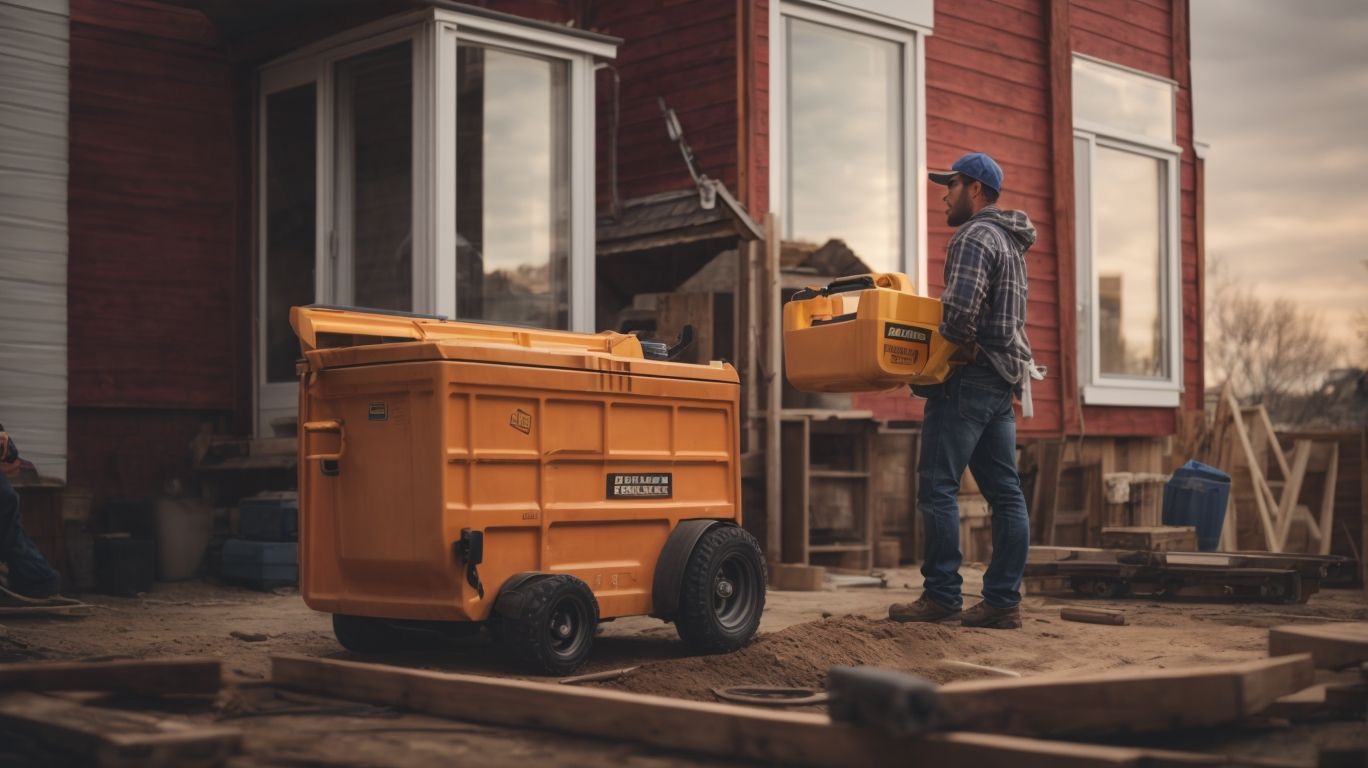
Weighing the Options: DIY vs. Professional Second Story Additions
Considering adding a second story to your home but unsure whether to go the DIY route or hire a professional?
This article explores the benefits of a second story addition, from increased living space to added home value and design flexibility.
We’ll also delve into the risks and steps involved in a DIY project, as well as the advantages of hiring a professional. By the end, you’ll have a clearer picture of which option is best for you.
What Is a Second Story Addition?
A second-story addition involves the construction of a new level on top of an existing structure, typically as part of a home improvement project.
This type of renovation project allows homeowners to expand their living space without sacrificing yard space and is a popular choice for those looking to add more bedrooms, bathrooms, or a dedicated office area to their homes.
Second-story additions require careful planning and adherence to local building codes to ensure structural integrity and safety. From obtaining the necessary permits to choosing the right materials, construction professionals work closely with homeowners to bring their vision to life.
The end result is a transformed home that meets the growing needs of the household while increasing property value.
What Are the Benefits of a Second Story Addition?
Second-story additions offer multiple benefits, including increased living space, added value to your home, and more design flexibility to enhance your living environment.
Expanding vertically with a second-story addition allows you to maximize your property’s square footage without the need to expand horizontally, which is especially advantageous for homeowners with limited lot space.
These additions can significantly increase the resale value of your home, making it a wise investment for the future. From a design perspective, a second-story addition provides an opportunity to create a new aesthetic dimension to your living space, allowing for more creative interior layouts and architectural features to personalize your home.
Increased Living Space
Opting for a second-story addition provides homeowners with the opportunity to expand their living space according to their preferences and the requirements of their home expansion project.
This approach allows individuals to maximize the use of vertical space, leaving the lower level untouched while adding more rooms or functional areas upstairs. By going up instead of out, homeowners can retain their outdoor space and garden areas, which may not be possible with a horizontal expansion. Second-story additions also offer the flexibility to design custom layouts, such as adding a master suite, extra bedrooms, a home office, or even a playroom, catering to the specific needs and desires of the residents.
Added Value to Your Home
One of the key benefits of a second-story addition is the significant boost it provides to your home’s value, making it more desirable in the competitive real estate market and offering a favorable return on investment.
Expanding vertically by adding a second story not only increases the square footage of your home but also adds functional space and enhances the overall aesthetics. This enhancement in size and functionality appeals to potential buyers, setting your property apart from others in the market. With the growing trend of maximizing space in homes, a second-story addition can be a smart investment that yields long-term financial benefits. The improved curb appeal and modernization that come with a second-story addition can translate into a higher selling price when you decide to put your home on the market.
More Design Flexibility
By opting for a second-story addition, homeowners can enjoy enhanced design flexibility, allowing for greater customization and the creation of spaces that align with their aesthetic preferences.
This additional level not only expands the available living area but also provides opportunities to incorporate unique design elements, such as skylights, balconies, or large windows that bring in more natural light.
Homeowners can tailor the layout, room sizes, and finishes to suit their individual tastes and lifestyle needs, resulting in a truly personalized living space.
The ability to blend existing architectural styles with new additions allows for a seamless integration that enhances the overall aesthetic appeal of the home.
DIY Second Story Addition
Embarking on a DIY second-story addition project can be a rewarding yet challenging endeavor that requires careful consideration of the associated risks, necessary skills, and materials.
When taking on such a significant home improvement task, it’s crucial to understand the complexities involved. From structural integrity to zoning regulations, there are various factors to navigate. The risks associated with working at heights and handling heavy building materials should not be underestimated.
Skills such as carpentry, roofing, electrical work, and plumbing are essential for a successful project. Ensuring safety measures are in place and having a detailed plan are key components of a DIY second-story addition. Time, effort, and dedication are pivotal to overcoming the obstacles that may arise during the construction process.
What Are the Risks of a DIY Second Story Addition?
Undertaking a DIY second-story addition comes with inherent risks related to structural integrity, safety concerns, and the potential for accidents if proper precautions are not taken.
Structural integrity is a critical aspect to consider when embarking on a second-story addition project. Without the expertise of professionals, there is a high risk of compromising the structural soundness of the existing building. This can lead to costly repairs in the future or even structural failures, posing a danger to anyone inside.
Safety hazards such as falls from heights, electrical accidents, and inadequate ventilation can arise during the construction process. Implementing proper safety measures and adhering to building codes are essential to mitigate these risks and ensure a secure environment for all involved.
What Are the Steps Involved in a DIY Second Story Addition?
The process of a DIY second-story addition entails various steps, from planning and obtaining permits to execution and project management, requiring a certain level of expertise and hands-on skills.
- This project begins with meticulous planning, where the layout and design of the new space are carefully considered to ensure it aligns with the existing structure.
- Once the plans are finalized, the next crucial step involves obtaining the necessary permits from the local authorities to comply with building regulations and codes.
Throughout the execution phase, attention to detail is paramount, as aspects like structural integrity, electrical wiring, plumbing, and insulation must be seamlessly integrated. Effective project management is essential to oversee timelines, budgets, and coordination of various contractors and suppliers for a successful second-story addition.
What Are the Necessary Skills and Tools for a DIY Second Story Addition?
Undertaking a DIY second-story addition requires a set of essential skills such as construction knowledge, proficiency in using tools, and a focus on safety practices to ensure a successful and secure project completion.
- Being knowledgeable about load-bearing structures, framing techniques, and electrical systems is crucial when embarking on a second-story addition.
- Mastering skills in measuring, cutting, and fastening materials like wood and drywall is fundamental for achieving precise construction outcomes.
- Utilizing tools such as power saws, framing nail guns, and levels with accuracy and efficiency is vital for the project’s progress.
- Prioritizing safety measures such as wearing protective gear, securing ladders, and being cautious around electrical wirings are non-negotiable aspects of the construction process.
Professional Second Story Addition
Opting for a professional second-story addition ensures high-quality workmanship, expert expertise in construction and design, and a streamlined process that adheres to set timelines and budgets.
Professionals bring a wealth of experience to the table, allowing for innovative solutions and meticulous attention to detail. Their in-depth knowledge not only ensures structural integrity but also enhances the overall aesthetic appeal of the project. With their network of suppliers and contractors, professionals can secure materials at competitive prices, translating into cost-effective solutions for clients. By entrusting your second-story addition to skilled professionals, you can rest assured that every aspect of the construction process is handled with precision and care, resulting in a seamless and successful project completion.
What Are the Advantages of Hiring a Professional for a Second Story Addition?
Engaging professional contractors for a second-story addition offers numerous advantages, including access to skilled labor, adherence to set timelines, and efficient project completion within the expected timeframe.
Having skilled workers on the job ensures that the construction process is handled by individuals with the expertise and experience to execute the project effectively. These professionals not only bring their knowledge to the table but also work efficiently to meet project milestones. By sticking to the agreed-upon schedule, professional contractors help in avoiding delays and ensuring that the second-story addition is completed on time. This level of professionalism and commitment to timelines can provide peace of mind to homeowners undertaking such significant home improvement projects.
How Do You Choose the Right Contractor for Your Second Story Addition?
Selecting the right contractor for your second-story addition involves evaluating their reputation, communication skills, expertise, and adherence to building standards to ensure a successful and satisfactory project outcome.
- When assessing a contractor’s reputation, consider checking online reviews, seeking recommendations from friends or family, and verifying their track record of completed projects.
- Effective communication is crucial for smooth collaboration, so make sure the contractor is responsive and able to clearly convey plans and expectations. Verify the contractor’s expertise by asking for examples of similar projects they have completed and assessing their knowledge of the latest building techniques.
- Confirm that the contractor complies with building codes and regulations to avoid any legal or safety issues during the construction process.
What Are the Steps Involved in a Professional Second Story Addition?
A professional second-story addition project entails various steps, including project planning, obtaining necessary building permits, hiring subcontractors, and overseeing project management to ensure timely and quality completion.
During the planning phase, it is crucial to work closely with architects and designers to develop detailed blueprints and construction plans that align with local building codes and zoning regulations. Once the plans are finalized, the next step involves securing the required building permits from the relevant authorities, which may involve submitting detailed documentation and undergoing inspections. Subsequently, subcontractors such as carpenters, roofers, and electricians need to be carefully selected and coordinated to execute the construction work efficiently. Effective project management is essential throughout the process to keep everything on track, address any challenges that may arise, and ensure the final result meets the client’s expectations.
What Are the Costs and Timeline for a Professional Second Story Addition?
Understanding the costs and timeline of a professional second-story addition is crucial for effective budget planning, with detailed estimations, material selection, and labor costs playing key roles in the overall project scope.
Accurate estimation of both material and labor costs is essential to avoid budget overruns and delays in project completion. When it comes to material choices, opting for high-quality but cost-effective materials can help in maintaining a balance between durability and affordability.
Selecting experienced professionals for the construction work can impact the overall timeline significantly, as skilled labor can streamline the process and minimize potential delays. Balancing cost considerations with the desired quality of work is fundamental in ensuring a successful second-story addition project.
Which Option Is Best for You?
Choosing between a DIY second-story addition and hiring professional contractors depends on various factors, including your skills, experience, budget constraints, and preferences, requiring a careful consideration of the pros and cons of each option.
Undertaking a DIY project for a second-story addition may allow you to save on labor costs and gain valuable hands-on skills in construction, providing a sense of accomplishment and control over the project. It requires a significant time investment, meticulous planning, and a certain level of expertise to ensure structural integrity and compliance with building codes.
On the other hand, opting for professional contractor services offers convenience, efficiency, and expertise, as experienced professionals handle the project from design to completion, relieving you of the burden of decision-making and technical complexities.




No Comments